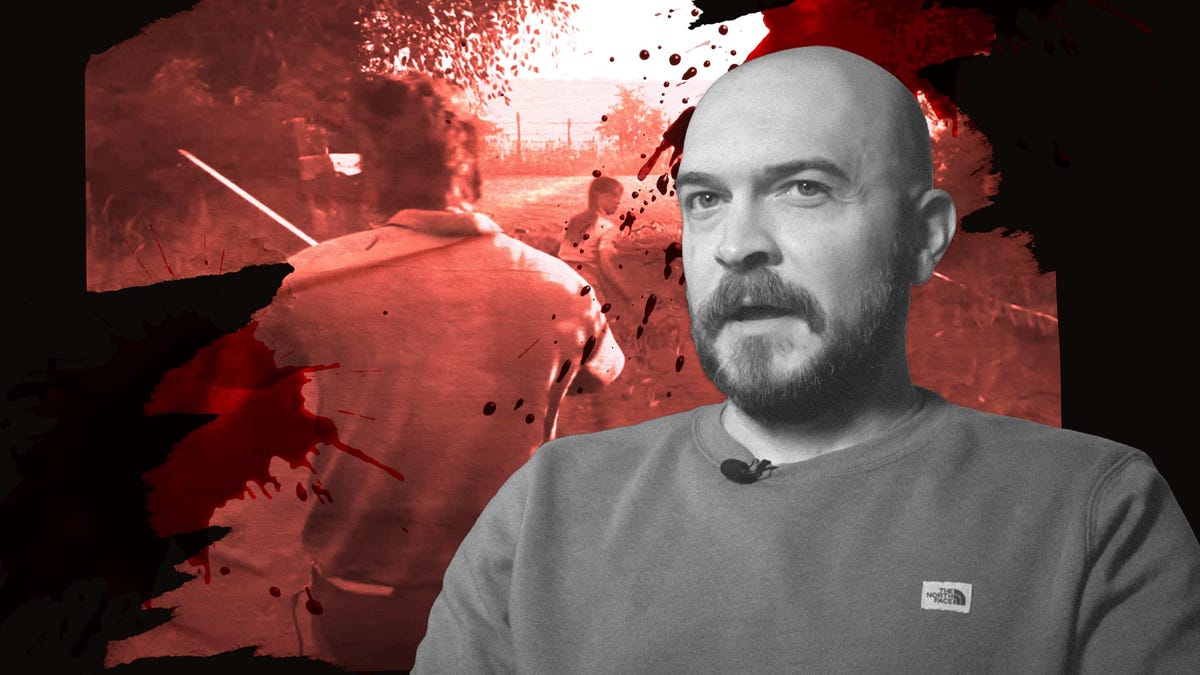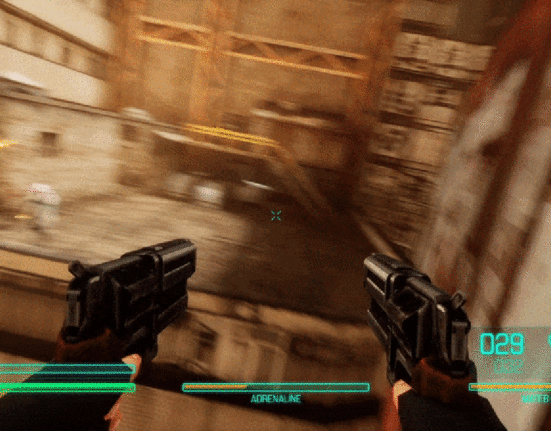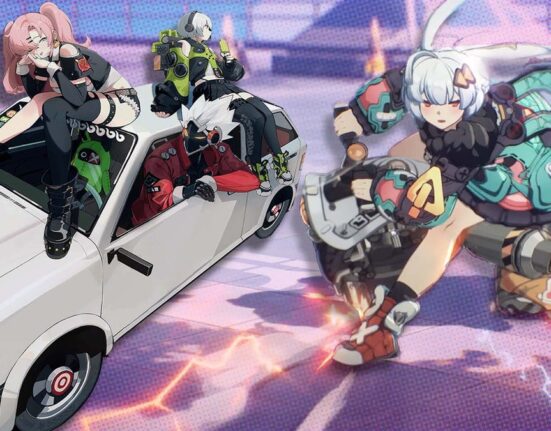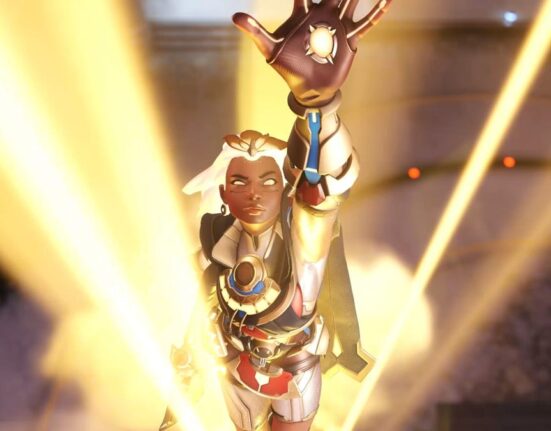Tobe Hooper’s 1974 stomach-roiling film The Texas Chain Saw Massacre is a slasher masterpiece with unparalleled garish beauty. None of its prosaic sequels have quite managed to replicate its magnetic horror: Scorching viewers with an orange sun and tossing them into the orange smoker, where the barbecue goes, like the original does. But developer Gun Interactive will sure as hell try to capture that in its forthcoming asymmetrical horror game The Texas Chain Saw Massacre, art and audio director and CEO Wes Keltner tells me.
“We could have just taken some ingredients that some people think of as scary and slapped [cadaver-wearing antagonist] Leatherface into it, but we don’t work that way,” Keltner says over email about the game, due August 18. “That unique blend of […] discomfort, absolute terror, and beauty all had to find their way into the game for us to earn the right to call it The Texas Chain Saw Massacre.”
Recreating the Texas of The Texas Chain Saw Massacre
Gun Interactive toiled under the movie’s looming, skull-shaped shadow in pursuit of that right, poring over the film and its details like an obscure Bible verse.
“We spent weeks in rural Texas towns, snapping over 10,000 photos that were referenced by artists,” Keltner says about establishing locations for the game. “We studied the sounds, insects, floral and fauna present in Texas at exactly the month our game takes place.” They even fact-checked Texas songbirds’ migratory patterns to make sure that if a player heard some occasional ambient chirping, it was accurate.
“Obsessive? Yes,” Keltner says, hearing your thoughts. But “if something is just a bit off, it might nudge you towards reality, thus killing the illusion we spent the last three years of our lives creating.”
“We want the fan to be completely immersed in the world of Texas Chain Saw,” he continued. “Every sound, every plant, every drop of blood.”
The original film savors—in close-ups and tense, lingering shots—a group of friends getting sledgehammered by a cannibalistic family, who makes mass murder look as simple as plucking chicken feathers. But it’s notably lacking in blood.
You only ever get quick, unexpected looks at it, brushed in-between armadillo roadkill’s rough skin like lotion, pooling in a cannibal’s palm after he cuts himself, or forming a wet bead at the tip of protagonist Sally’s finger, right before desiccated Grandpa sucks it clean. Its infrequent appearance makes it more significant, especially as it collects and dries on Sally’s body, rewarding her unwavering, exhausting screams with red. It also makes it so, as Keltner notes, “perceived gore is far more relevant” to your full-body terror.
Much of the film’s horror relies on the viewer’s runaway imagination. The camera never shows character Pam’s wound as Leatherface sticks her onto a waiting meat hook, but you see her agonize, unable to move or breathe, and you might picture the wound as worse than it is.
Gun’s Texas aims for similar suggestiveness. “The game might ramp up the gore a bit more compared to the film, it’s still not the backbone or focus of visual tone or gameplay,” Keltner says. “We didn’t want to look at other films that might have more visceral gore and try to shove that into this game. That wouldn’t be very Texas.”
Asymmetrical horror done different
To keep things Texas, the game maintains the ensemble cast format of the film—a few friends get gutted by a few depraved butchers—and translates it easily to an asymmetrical survival horror, kind of how Dead by Daylight, also inspired by the 1974 film, sets up its game.
But unlike DbD, or other one-versus-many horror games like Evil Dead: The Game or Friday the 13th: The Game, also published by Gun, Texas will be 3v4, with five Family members and five Victims, all with unique abilities, for players to choose from.
“What makes The Texas Chain Saw Massacre so unique is that we find a family of killers […]. They’re protecting their way of life, protecting their property, and protecting themselves—or at least that’s what they tell themselves,” Keltner says. “When players take control of these killers, they’re not playing monsters, or absolute killing machines—they’re playing damaged humans. Just like with the victims, these characters chat with one another, they have relationships that we take pains to depict.”
Single-player or bot matches won’t be possible, but Keltner hopes the games’ meticulously-made, but unscripted, format will boost players’ genuine, spontaneous fear.
Killer “patrols are not going to be predictable, their actions are going to be impromptu based on what that team is thinking, communicating, and acting upon at any given moment,” he says. “When you’re a Victim, hiding in a pool of shadows behind a couch and a couple of Family members walk into a room, you don’t know whether they’re going to check exactly where you’re at, or if they’re just passing through. That tension and fear you feel is ramped up compared to when you’re facing an A.I. whose path you’ve memorized.”
In this sense, Texas strives to provide all the typical asymmetrical multiplayer high notes, which rely on temperamental players to provide the fun in its gameplay. Conveniently, this more turbulent anxiety also melds well with the soul of the 1974 movie, something Keltner constantly returns to.
Not a remake, but a prequel
But, diverging slightly from Gun’s quest for movie accuracy, the game’s story serves somewhat as a prequel to the first film, with recognizable Family member characters and Victims that are new to the franchise.
“In our game, these teens have walked into this situation purposefully,” Keltner says. “Ana, one of the characters you can play, has gathered this group to search for her sister, Maria, who went missing in this part of Texas.”
Due to the unpredictable nature of an asymmetrical multiplayer, Texas also abandons the film’s concept of the “final girl,” though originator of the term Carol J. Clover credits the movie with kicking the trope off in her seminal essay Her Body, Himself: Gender in the Slasher Film. (“For nearly thirty minutes of screen time—a third of the film—we watch [Sally] shriek, run, flinch, jump through windows, sustain injury and mutilation. Her will to survive is astonishing; in the end, bloody and staggering, she finds the highway,” Clover writes).
“The combinations of endings are too vast” to engage with the loaded term, or predict any kind of lone victim in general, Keltner says. The game, instead, individualizes Victims in a different way.
“We wanted to make sure […] that each player feels like they’ve just been through their own personal version of The Texas Chain Saw Massacre,” Keltner says. “The characters have dialogue with each other, they have reactions, conversations, and emotions that we wanted to make sure were conveyed so that players really grab onto the narrative they’re creating as they play—whether they survive this ordeal or not.”
That may or may not work for you. Keltner knows that, for some people, a great horror game is going to be defined by “jump scares galore. For others, they want slow, rising tension and dread. Still, others just want body horror and gore everywhere,” he says. But Texas, the game, is ruled by a reverential dedication to the movie, not typical asymmetrical multiplayer conventions, audiences clamoring for carnage, or even Saturn’s retrograde.
“For us,” he tells me, “we’re going to look at the original property and say, ‘That’s what we’re making.’”







Leave feedback about this